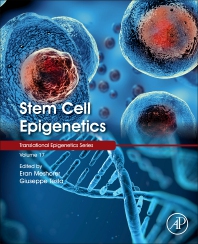Academic Press
- 1st Edition
- Volume 17
- August 5, 2020
- English
- Hardback9 7 8 0 1 2 8 1 4 0 8 5 7
- eBook9 7 8 0 1 2 8 1 4 0 8 6 4

Stem Cell Epigenetics
- 1st Edition
- August 5, 2020
- Alena Bleicher + 1 more
- English
- Paperback9 7 8 0 1 2 8 1 9 5 3 4 5
- eBook9 7 8 0 1 2 8 2 3 5 5 4 6

The Material Basis of Energy Transitions
- 1st Edition
- August 5, 2020
- Shabir Hussain Wani
- English
- Paperback9 7 8 0 1 2 8 1 9 3 3 4 1
- eBook9 7 8 0 1 2 8 1 9 3 3 5 8

Transcription Factors for Abiotic Stress Tolerance in Plants
- 1st Edition
- August 4, 2020
- Victor Nian
- English
- Paperback9 7 8 0 1 2 8 1 8 2 5 6 7
- eBook9 7 8 0 1 2 8 1 8 2 5 7 4

Advanced Security and Safeguarding in the Nuclear Power Industry
- 1st Edition
- August 4, 2020
- Kamal Dua + 5 more
- English
- Paperback9 7 8 0 1 2 8 2 0 6 5 8 4
- eBook9 7 8 0 1 2 8 2 0 8 8 8 5

Targeting Chronic Inflammatory Lung Diseases Using Advanced Drug Delivery Systems
- 1st Edition
- Volume 112
- August 4, 2020
- Geoffrey M. Gadd + 1 more
- English
- Hardback9 7 8 0 1 2 8 2 0 7 0 7 9
- eBook9 7 8 0 1 2 8 2 0 7 0 8 6

Advances in Applied Microbiology
- 2nd Edition
- August 2, 2020
- Maria R. Kosseva + 1 more
- English
- Paperback9 7 8 0 1 2 8 1 7 1 2 1 9
- eBook9 7 8 0 1 2 8 1 7 3 7 7 0

Food Industry Wastes
- 2nd Edition
- July 31, 2020
- Patricia Jones + 2 more
- English
- Paperback9 7 8 0 1 2 8 1 6 9 2 6 1
- eBook9 7 8 0 1 2 8 1 6 9 2 7 8

A Quick Guide to Metabolic Disease Testing Interpretation
- 2nd Edition
- July 30, 2020
- Megan B. Brickley + 2 more
- English
- Paperback9 7 8 0 0 8 1 0 1 0 2 0 4
- eBook9 7 8 0 0 8 1 0 2 2 7 8 8

The Bioarchaeology of Metabolic Bone Disease
- 1st Edition
- July 29, 2020
- Peter Mccaffrey
- English
- Paperback9 7 8 0 1 2 8 1 4 9 1 5 7
- eBook9 7 8 0 1 2 8 1 4 9 1 6 4

An Introduction to Healthcare Informatics